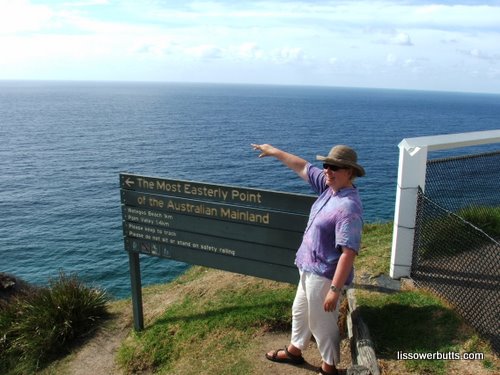This is the fourth part of the Keyword Academy Case Study series – if you are new here you may want to start with part 1, part 2 and part 3 (Postrunner tutorial)
So now we have the keywords chosen, the site installed – now what? Well first – particularly if this is a brand new domain – which mine is – you need to get the site indexed. There is a sure fire way to do this – find a site which is being crawled by Google a lot – and get a link from it. I used Postrunner obviously – and many people there will tell you their site has very fast indexing – most of them don’t lie either. Once I find a site that gets crawled a lot and gets sites indexed easily I carefully document and remember it (i.e. I scribble its name semi-legibly on a post it note and stick it on the white board).
How To Know If A Site has Quick Indexing
Two types of sites seem to get quick indexing in my experience:
- authority sites
- sites whith lots and lots of updating content
This site is an authority site (google lissowerbutts.com and you will see a listing with more links in it than normal – that’s an authority site). I don’t post very often here – but when I do I am disappointed if it takes longer than 30 minutes for Google to index the post. BTW that works for posts which include duplicate content as well and posts with hardly any words in them at all. Though it take several hours for Google to notice a new Resources page I added.
So once Google loves a site it will love anything you put on it and – for our purposes today – this is the important bit – it will follow any links you add and if the site is not indexed it will get crawled.
To find a site with constantly updating content – just check the cache date in the google index – is it recent, check when it last indexed new pages and compare that to what is showing new on the site.

Planning a Backlink Campaign
I used to randomly just get links for sites – this is better than not getting links at all, but these days I am a little more organised – mainly so I know what I need to do next on the site. You see I may not be back for a month given the number of sites I have. On my spreadsheet I keep a record of the main keywords and the cousins. On another tab I create a list – date per a line for a fairly heavily link building time frame like this one. Normally I have a column for source (Postrunner, ezineatricles, hubpages etc). Then a note (written, ordered,scheduled), the keyword I’m anchoring on the PR of the site I have sent the article to and the url of the stie (replaced with the article’s url when I have it). With Postrunner is very easy because you can schedule posts to appear on a certain day.
For anchored text I mix it up between the title of the site, the site’s url and cousin keywords. I throw in the odd “click here” and “this site” too – just to keep it looking natural (that’s a Griz tip BTW).
For the sites I chose – I don’t go for just high PR – I used a PR3 to get the site initially indexed – but about 80% of my links are from PR0’s why? Because 80% of the Internet has PR0 sites (a statistic I just made up on the spot).
I decided to go with 25 posts to 25 different Postrunner directories in the first month. I scheduled 9 to be sent out in the first 15 days of the month and the rest to appear at the end of the month. So roughly I went from a post post every 3 days at the start to posts twice a day at the end.
Am I building links too fast – will I get sand boxed (ie thrown down the rankings to live several months in the 100’s) – no idea – I guess you will have to stay tuned to find out!
Oh and before anyone asks – no it doesn’t matter if you only have have the site’s titled used 24.8% of the time not 25% of the time, or you link from 82.3% of PR0 sites! It doesn’t matter if you schedule a post to show up at 4am or 7pm either! Its not that exact guys – ifyou need exact in your life this game with drive you insane.
Articles and Links
Each article I use for these backlinks is a minimum of 300 words, has the main or related keyword in the title and once in the content. I have a single link out to my site – usually in the first couple of the lines of the article. Why so early in the content – two reasons. First the higher on the page your link is the (slightly) better it is for SEO. Second for many themes they will only publish part fo the post on the front page – if my link is in that first paragraph then it will probably hit that front page – the one with the PR associated with it.
I only include one link per an article to my site – Postrunner allows two but as I am only promoting a single site with basically a single keyword (and some closely related cousins) I don’t want to dilute the links.
I keep a copy of every article I use for support – I try to keep them somewhere that I can find them again.
Articles and Useful Links
Question: when is a link in an article useless to you? When the article isn’t indexed. About a month after publishing I go back and check that the article (not the site the actual article’s url – that’s why I made a note of it above) is indexed. If its not its a waste of time. I may get it indexed by sending some links to it – usually from another network I’m a member of. If I can’t get it indexed at all – or if the site has disappeared – its happened to me (but not with Postrunner sites yet) – I take the article (you know the copy I kept) and resubmit it to another site – its not duplicate because its never been indexed.
Tracking Your Backlinks
I quite like seeing what Google is seeing so I use Google Alerts to know when pages on my site are indexed (site:mydomain.com} an when Google recognises a link (link:mydomain.com) – far less common than Yahoo recognising links.
That’s about it really – nothing too complex – I have scheduled the articles out for the rest of the month so I am off to focus on another site for a while.

 Oh and because I know its possible to. My partner and I own several
Oh and because I know its possible to. My partner and I own several 